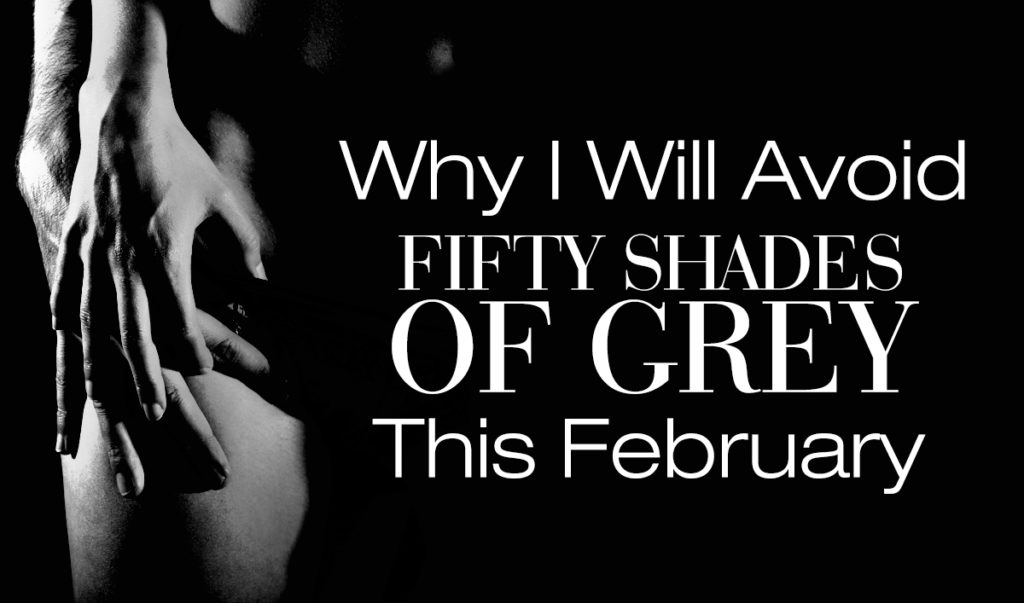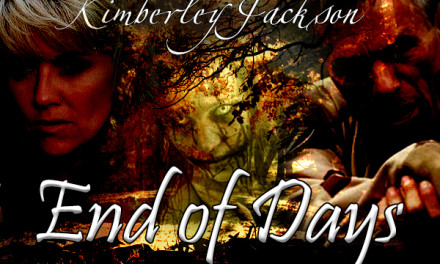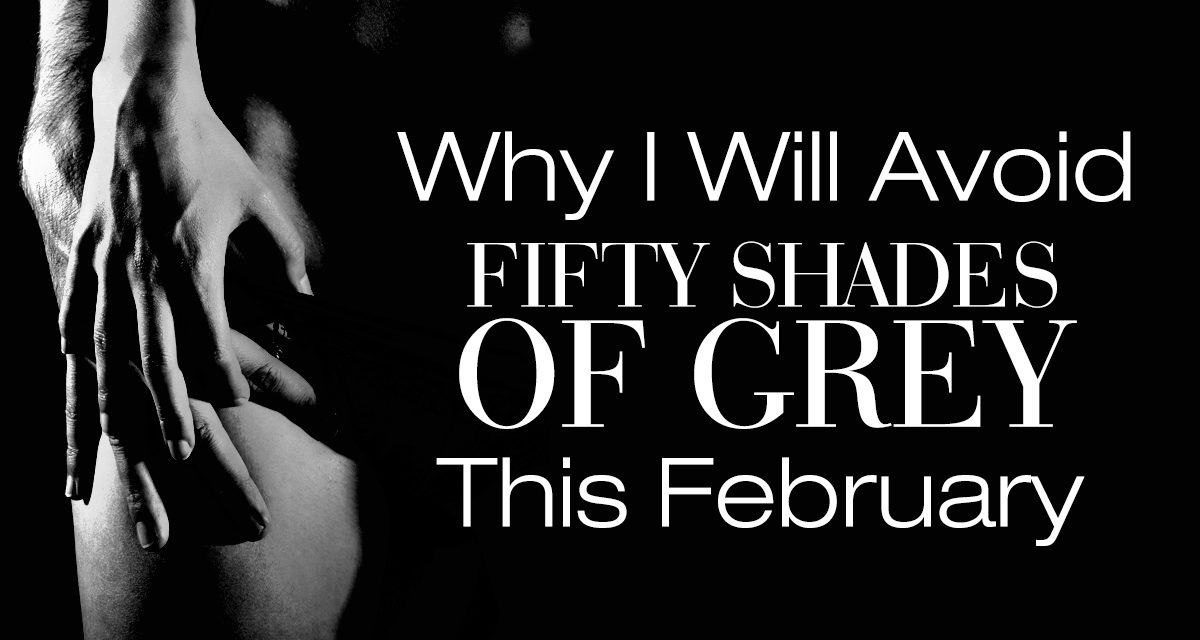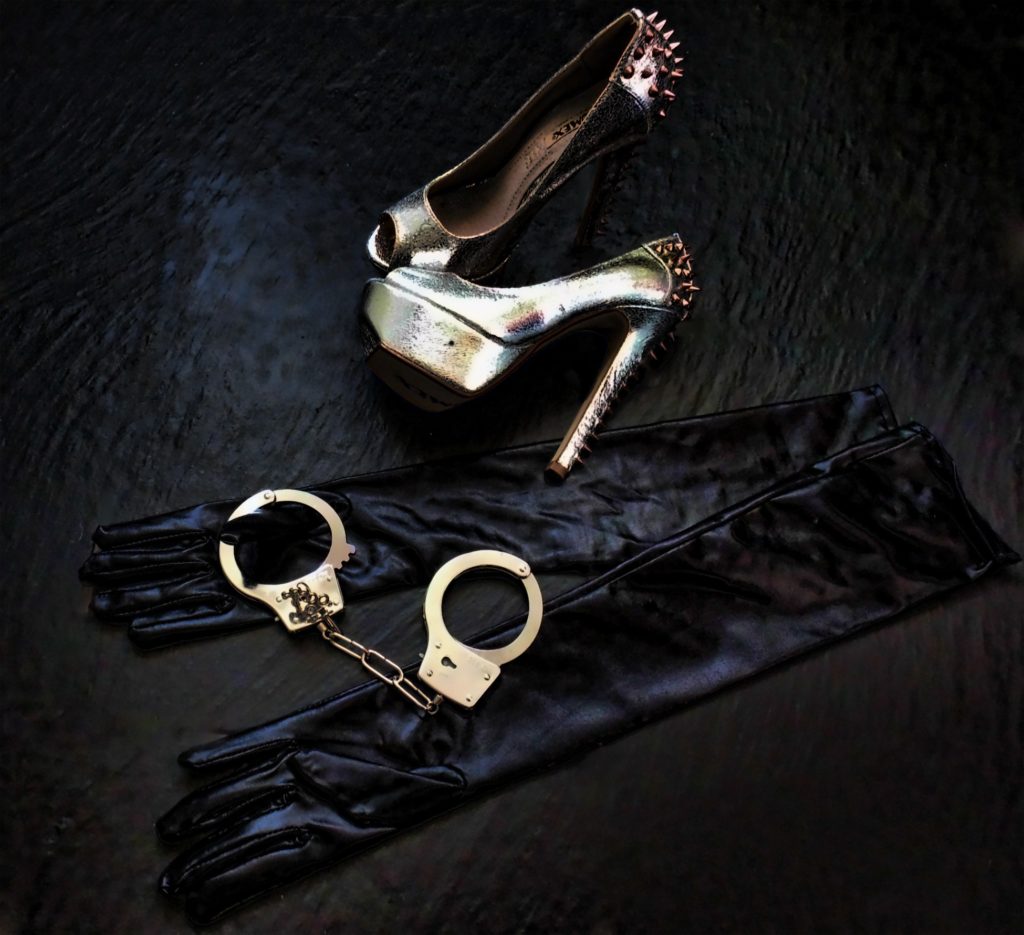
© 2017 by Fotolia / Nick Freund
A while ago I read E.L.James’s novel Fifty Shades of Grey. Some of you might remember it because back then I posted sort of a reading diary for the first few chapters.
With the new movie on the verge of hitting theaters, now is a good time to sum up my Fifty Shades of Grey experience. For those of you new to my blog, or my person, I’m a real-life lifestyler (weird phrasing) and an avid reader (and writer) of BDSM erotic romances. So I’ll be comparing James’ work to the actual lifestyle, and (in the end) give recommendations for works of other authors.
Keep in mind, this article represents an opinion. You can agree or disagree, but be civil in the comments section or I’ll ban you. Warning: criticism ahead. If you don’t wanna read negative criticism about 50 Shades of Grey, hit the back-button on your browser. NOW!
First of all, I still haven’t finished reading the trilogy. And I won’t. I made it through the first book, and surprisingly found the end captivating enough to look forward to the second book (for a brief time—until I was about 2-3 chapters into the second book). But then the story went down the same ill-advised, fundamentally incompatible, borderline abusive road as the first book did.
So at about 40% through, I decided not to waste my time on it any longer. Let’s face it, life’s too short to waste it on a shitty story. And there are a lot of BDSM erotic romances out there, which are actually worth reading.
So here are my reasons why I put the book down. (And no, they have nothing to do with feminism.)
#1 Mainstream BDSM clichés in Fifty Shades of Grey
No. Big fat no. While, yes, whips and chains and pain may be part of BDSM activities for some couples, that doesn’t have to be the case. In fact, many couples in the lifestyle aren’t into pain at all. Or chains. (Some use ropes, or silk scarves—or just no bondage at all. ;) )
It depends entirely on the couple’s shared kinks.
Which brings me right to the important keywords: shared kinks.
There don’t seem to be many of those shared kinks in 50 Shades of Grey. Shared kinks and expectations are usually summed up as compatibility in real life BDSM or D/s culture. To determine compatibility, couples usually vet each other before even thinking about getting down to business. (Yes, it can be as unromantic and clinical as it sounds.)
What does this mean? There’s usually an intense discussion of hopes, dreams, and aspirations (the kinky version) to see if Dominant and submissive have enough in common to move forward. They should share similar traits. One of these basic traits for example is sadist or masochist. (Again, no, not everybody who is into BDSM is either of the two.)
A sadist is somebody who is sexually aroused by inflicting pain on another person.
A masochist is somebody who is sexually aroused by feeling pain.
A lot of players in the BDSM community are neither, because, as I mentioned above, BDSM doesn’t have to be about pain. Many players have no interest in giving or receiving pain at all. In fact, many people involved in the communities have distinguished between BDSM and D/s for years. They rate BDSM to be purely the sexual practice, whereas D/s is the mindset (Dominant/submissive or Master/slave power dynamics). You don’t have to be into BDSM if you’re into D/s—or vice versa. To read more on the difference between BDSM and D/s, check out this article on my official blog.
Back to 50 Shades of Grey: Christian Grey is clearly set out as a sadist. He enjoys whipping or caning women. Enjoys the process of giving pain.
Anastasia however is not at all a masochist. She seems mainly attracted to the D/s aspect of the relationship. Yes, she does enjoy the occasional bondage, and she’s definitely into Grey’s perceived dominance, but she doesn’t enjoy pain. AT ALL.
That makes them incompatible. Simple as that. Case closed. Romance over. At least in the real world.
James decided to go for a train wreck instead—maybe because she didn’t know how to write BDSM without the cliché of whips and pain.
#2 (Mis)Communication in Fifty Shades of Grey
Um, no. Again, this might not sound particularly romantic, but as I mentioned above, BDSM couples usually talk about scenes beforehand. Especially if it’s going to be their first scene ever!
They plan them, often meticulously, so that both Dom and sub know what to expect, and, more importantly, how far to take it. This is especially crucial in the beginning, when a couple is unaware of each other’s limits and potential triggers.
They don’t just tie each other up and go at it with whips. It has something to do with safety. They talk. A lot. Much more actually than vanilla couples do, because the essence of a long-term BDSM relationship is trust, and trust can only grow through communication.
Does anybody remember the scene at the end of Fifty Shades of Grey? The scene that makes Ana run out on Grey? The entire “show me how bad this can get” disaster?
Here’s why to me, this scene shows the height of their miscommunication and—yes, I’m gonna go ahead and say it—inherent abusiveness of their relationship:
First of all, let me start with Christian, who is supposedly set up as an experienced Dom. At least we’re repeatedly told by the author that he’s an experienced Dom, though I certainly don’t see it in his actions. (As a submissive, I have to say, he’s exactly the type of Dom you’re usually told to avoid.)
By the last scene, Christian is fully aware that he’s dealing with a woman who has no prior experience with the BDSM lifestyle. He’s aware that pain isn’t something she’s into. In fact, the way she phrases her request already shows not only her inexperience, but how much she dislikes it.
Yet, he thinks it’s a good idea to agree to show her just how bad it can be.
Um, what?
Let’s break this down, and there’s just so much wrong with this scene and his character setup here, I’m struggling to bring order to the chaos.
- Even if in BDSM and D/s the Dominant is the one controlling the scene, it is NEVER about the Dominant. Think of it like vanilla sex. Just because the man is on top in the missionary position doesn’t mean he can just strive for his orgasm and the woman is just there to help along his pleasure. No.
Likewise, in BDSM, every scene is about both Dom and sub. Many people say that in real BDSM the submissive is actually the one in power (because she sets the limits and by her safeword has the power to stop the scene).
Ana’s request “Show me how bad this can get” shows that what she is asking is not actually something she wants or is ready for. No experienced real Dom would go ahead and grant her wish, unless he were only interested in his own pleasure!
Or would you have sex with someone who tries to seduce you by saying “Ok, let’s get it over with” or “Show me how bad sex can be”?
If you don’t think it’s appropriate for vanilla sex to go ahead in such a case, why do you think that mindset is okay for a BDSM setting? - Connected to the previous point, Christian does go ahead because in his mind, BDSM is all about him. (Aha! Major character flaw right there.) This isn’t the only instance where that becomes clear. It’s clear in the slave contract and in the way he treats her. In his mind, she is only there to please him. She has to accept his terms, or walk away. “My way or the highway” is one of the worst attitudes you can have as a Dominant when you have a submissive like Anastasia, who is clearly new and not willing to hand complete power over to you. And if you call yourself an experienced Dom who knows what he’s doing—well, you should have a bit more awareness and self-control, to be honest.
- Christian really does show her the worst. No warm up, no guiding her there, no comfort. And that, to me, is not BDSM. That’s an accident waiting to happen. That’s the reason why the BDSM communities all over the world have been having issues with an influx of “Doms” taking their inspiration from Christian Grey.
Grey knows Ana isn’t into pain, yet he hides behind her supposed ‘consent’. It was foreseeable the scene would go wrong before it even started. It made me cringe. Overall, this is a great manual for how NOT to act in a BDSM scene. - Ana doesn’t safeword. And she really should have. Correct that, she shouldn’t even have asked for the scene, but since that already happened, she should have safeworded. Why didn’t she? Because the version of BDSM presented in the novel is all about the Dom. In E.L.James’s universe, the submissive has no right to say no. She can either accept a Dominant’s wishes or walk out. No negotiation, no open communication, no set up of limits that may be pushed.
Either you do what I want, or I’ll break up with you. Just no. That’s a very unhealthy relationship, and it goes against EVERYTHING advised by BDSM mentors.
#3 There’s a difference between being a Dominant and being domineering
This one is a big one, and I don’t even just want to pin this on the author. It might be that she actually did some research within the BDSM community, and just talked to the wrong people. The BDSM communities are filled with Dominants who proclaim themselves to be the real Doms, the good Doms, the only ones really knowing how to handle submissives.
What they all have in common is, that, yes, they are domineering. They throw around orders like a baseball pitching machine.
There’s a difference between being domineering and being a Dominant though.
In writing we have a rule: show, don’t tell. That’s quite a useful little mantra to go by in real life.
Good, experienced Dominants don’t go around proclaiming that they’re the good or the only real Doms, because they have no need to prove themselves (especially not by putting other Dominants down).
If you have a submissive mindset, you might sense who’s experienced and who isn’t. Dominants exude that air of dominance without overwhelming you. They dominate without controlling you. They don’t need to give you an order to make you feel like the submissive–and if they do, you’ll want to follow it because it satisfies some deep need inside you that you yourself might not be aware of.
A Dominant who introduces himself as a good Dom (or anything similar like that) should raise every red flag in a submissive’s head. Usually that type tries to exert control by issuing random orders with no regard for the submissive’s unique character or situation.
The Domineer (I just made that word up to make a point) considers all submissive women the same: they want to serve him and have no other needs. So he makes them do what HE wants them to do instead of getting to know her.
Being a Dominant is much more than ordering a submissive around. Being a Dominant means caring for her, listening to her needs (often more so than your own), and most importantly giving her what she needs (even as she herself often doesn’t realize it yet). Being a Dominant is about people skills as much as it is about psychology and self-awareness.
Being a Domineer is selfish, and usually comes with little reward for the submissive. It serves first and foremost the person giving the order with little regard for the feelings or needs of the person fulfilling it.
Being a Dominant is as much about the submissive as it is about the Dominant.
Christian Grey is a Domineer. He loves to give orders and control people. It’s the only way he knows how to handle people (and women in particular). And, worse, he is motivated by a fear of letting someone close, which is why he seizes all control.
BDSM scenes serve first and foremost his own sexual pleasure. Let’s face it, Ana is basically lucky she’s able to enjoy it—kudos to this story being fiction. In real life some of their sex would have most likely been perceived as borderline rape by the woman. (But then again, you can bring that argument up with almost any erotic romance.)
Grey has little regard for her needs (if he did, he would have NEVER agreed to the final scene in which he hits her), and in his mind, the entire world revolves around him.
Becoming a Dominant requires a lot of work on the part of the prospective Dom: training in self-control, self-awareness, self-confidence, etc. A Dominant first needs to control himself before he can control a submissive.
Grey lacks both the self-control and the mindset to be a good Dominant—even if James is constantly trying to convince us that he is just that.
#4 BDSM is unhealthy, sick, “fifty shades of fucked up”
This was a major one for me, and to this day I can’t get over it. On several occasions in the book, I got the feeling that, despite it being a BDSM romance, both the author and the characters tried to convey the message that BDSM is essentially something wrong, something that needs to be cured. That’s visible on several occasions:
- A lot of the times, Ana seems to be just going along with things because she wants to be with Grey, and agreeing to what he wants is the only way he will be with her. She isn’t interested in BDSM. And she ultimately seems to think that she can cure him of his dark desires.
- Christian himself says, when asked by Ana why he’s into BDSM, “because I’m fifty shades of fucked up”.
- The trilogy ends with them living happily ever after. No more BDSM. She heals him.
I took major issues with that, because every one of these points (and some more I’m sure I forgot) conveys the message: “Listen, BDSM is unhealthy. It’s sick. It’s a psychological condition that needs therapy and should be cured.”
That’s an outdated view not supported by psychological research. BDSM can also not be linked to being rooted in sexual child abuse, as the following important study indicated: Richters et al. (2008): Demographic and psychosocial features of participants in bondage and discipline, “sadomasochism” or dominance and submission (BDSM): data from a national survey. Journal of Sexual Medicine, 5 (7) 1660-1668.
So the argument that childhood abuse is responsible for Grey’s desire to engage in BDSM is not only scientific bogus, it also sends a very dangerous message: BDSM is unnormal and unhealthy. Those who engage in it should seek help.
They should not.
As long as there’s mutual consent, neither BDSM nor D/s are considered problematic by psychologists.
And it still saddens me that James wrote an erotic BDSM romance to send the ultimate message that BDSM is something wrong.
#5 Constant Manipulation in Fifty Shades of Grey
This is a sure recipe for a partnership—any partnership, be it BDSM or vanilla—to fail in the long run. And 50 Shades of Grey takes it to the extreme. Christian constantly tries to push or urge Ana into things she doesn’t want, often by going behind her back, giving her gifts she doesn’t want, and so on.
Ana in turn tries to train the Dom out of Christian.
Neither can accept the other person for who they are (or walk away from each other on the agreement that they’re just not compatible). Instead, they try to force a relationship simply because—well, they’re the hero and heroine of the story.
People can hide who they are for some time, they can adapt, maybe even make small changes in minor aspects of their personality. But if you’re not okay with one of the key traits of a person’s character, walk away. Especially in a D/s or BDSM relationship.
The alternative is a life where you and your partner terrorize each other, and you’ll either end up in an abusive relationship, or having a divorce.
Ana and Christian chose the path of trying to change each other. And, predictably, it ends in mistrust, suspicion, and constant manipulation on both sides.
The end of first book had it right. Ana and Christian needed to break up. And not get back together. That would have been the only character-congruent way for both to get their happy ending. Separate from each other.
***
So, where to go from here? If you are interested in real BDSM or D/s, I suggest reading one of the authors who are recommended by BDSM communities. Cherise Sinclair is one of them. I believe Shayla Black is another.
There’s tons of good BDSM fiction out there, and a lot of it goes much deeper into the complex power dynamics between Dominant and submissive. Also, I suggest you read up on BDSM by browsing forums, or visiting local groups. That will give you insight into the actual lifestyle—which is usually very consent-aware.
Here are a few BDSM erotic romances I recommend:
What are your favorite erotic romances, dark romances, or BDSM romances? Did you read 50 Shades of Grey? And if so, did you like it? Let me know in the comments below.




















Did you read anything by Tiffanny Reisz? I highly recommend the Siren and in fact all her Original Sinners series
nicely and succinctly explained………x x x
Thank you!! :) Glad you like it.